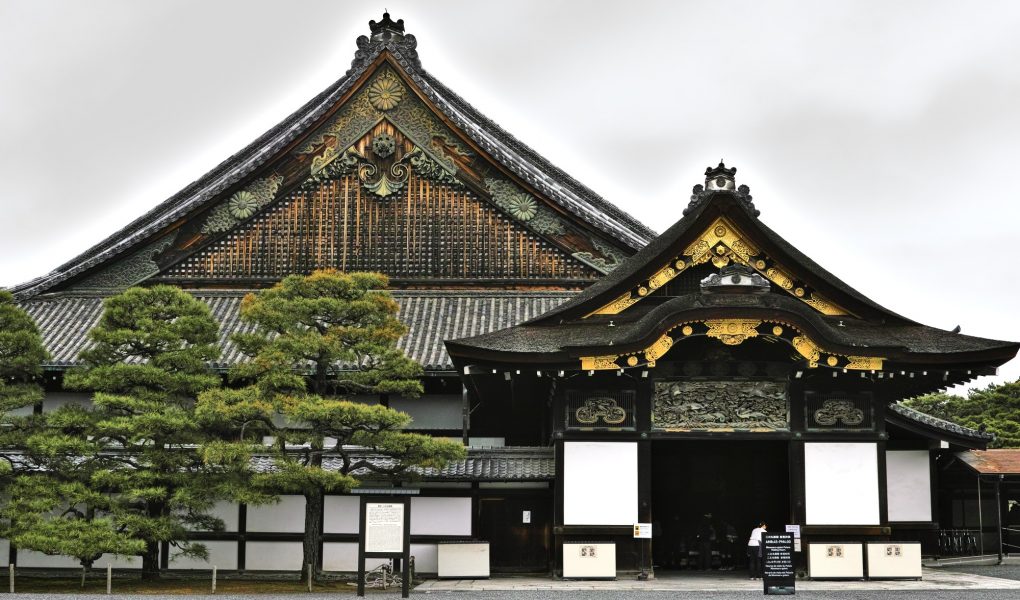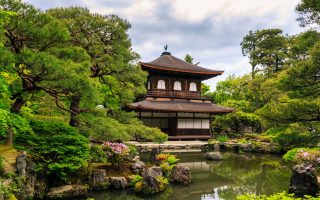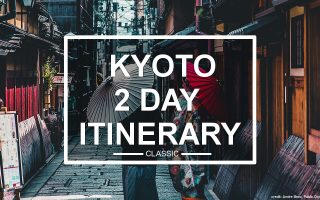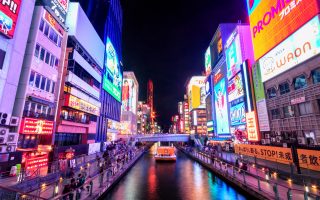Nijo Castle is a beautiful and well preserved castle, built in Kyoto between 1601 and 1626 by the Tokugawa clan. It features two palaces and numerous gardens. The complex is listed as a UNESCO world heritage site.
Nijō-jō, as the castle is called in Japanese, is a flatland type castle. That means it’s not built on a hilltop, or in any other favorable defense position. Instead, the castle is protected by a double fortification system, with two moats surrounding the complex. The inner moat surrounds the Honmaru Palace and garden. The outer moat surrounds the Ninomaru Palace. Honmaru means “main circle” and Ninomaru means “second circle”.
The castle complex is beautifully covered in trees, and has a cherry orchard with over 50 species of cherry trees, a plum orchard and a combined western and japanese garden called Seiryu-en. On top of that are the Ninomaru and Honmaru japanese gardens.
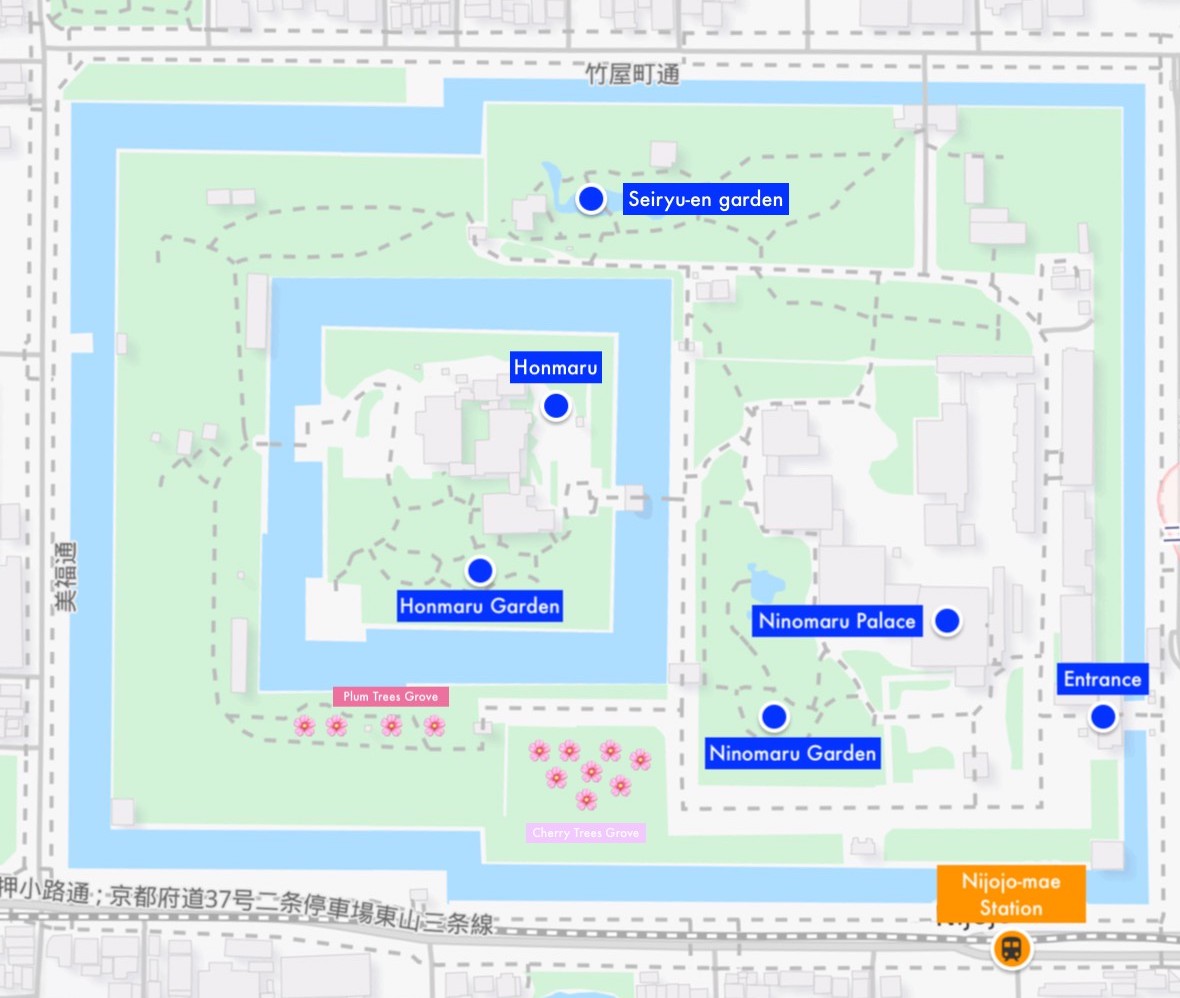
Ninomaru Palace
Ninomaru palace, which is open to visitors, consists of 5 primary buildings connected by covered walkways. The palace is maybe most famous for its “nightingale floors“, so called because they are designed to squeak when stepped on. The floors are said to function as a warning system, to avoid anyone sneaking up on the buildings residents.
The extravagant wood work however is also quite an attraction. Already when walking through the Karamon main gate, to access the palace area, one is awed by the extraordinarily beautiful wood carvings and large amounts of gold leaf. This outstanding style of decorations characterizes all the buildings of the palace.
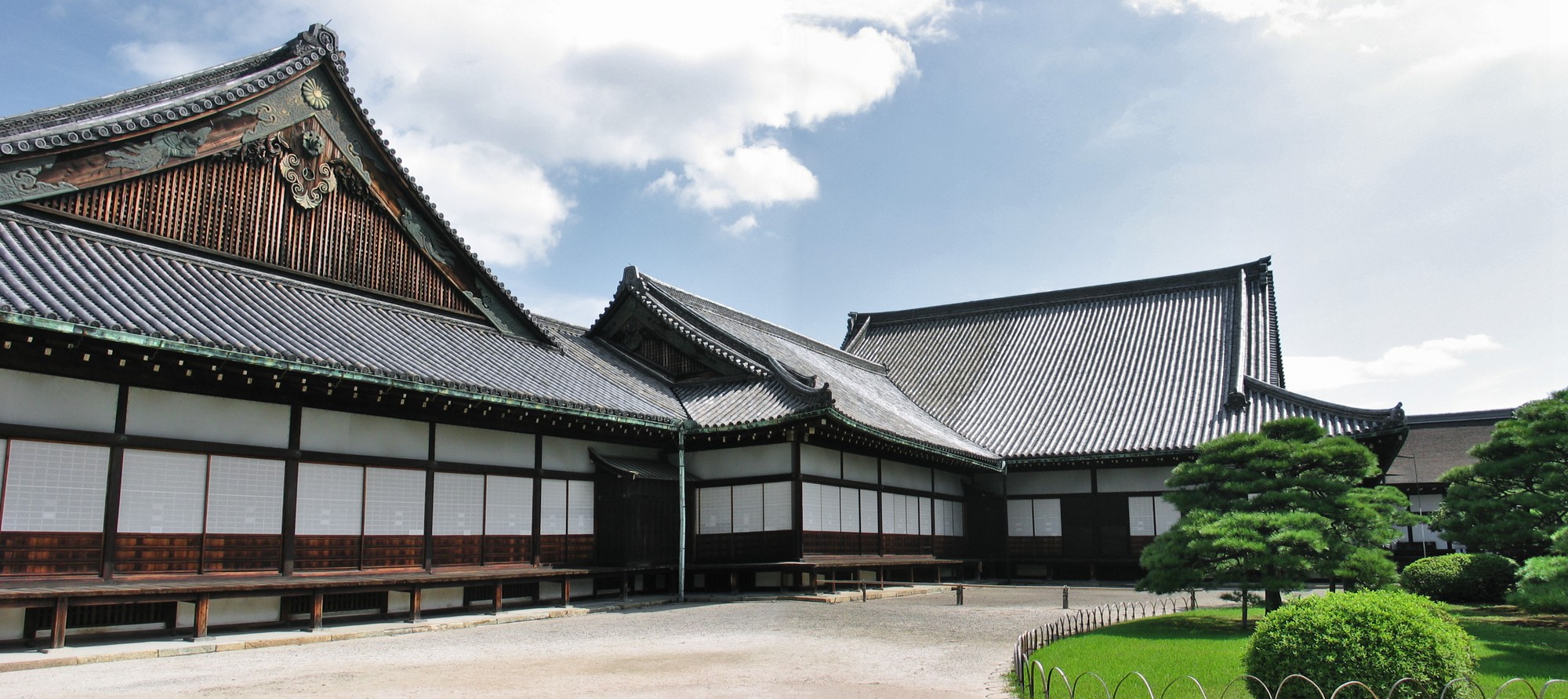
Credit: Keith Pomakis. Licensed under CC. Original modified.
The Shogun was normally residing in Edo (Tokyo), but he would stay at Ninomaru palace when visiting Kyoto. Inside the palace are numerous rooms meant for audience with the ruler. Depending on the visitors social rank, he would only be allowed to a certain level of audience room. Only the highest ranking visitors would get access to the main audience room, where the Shogun could actually be seen. The rooms are decorated with 3600 unique Kano-style paintings, of which more than 1000 are designated as important cultural assets.
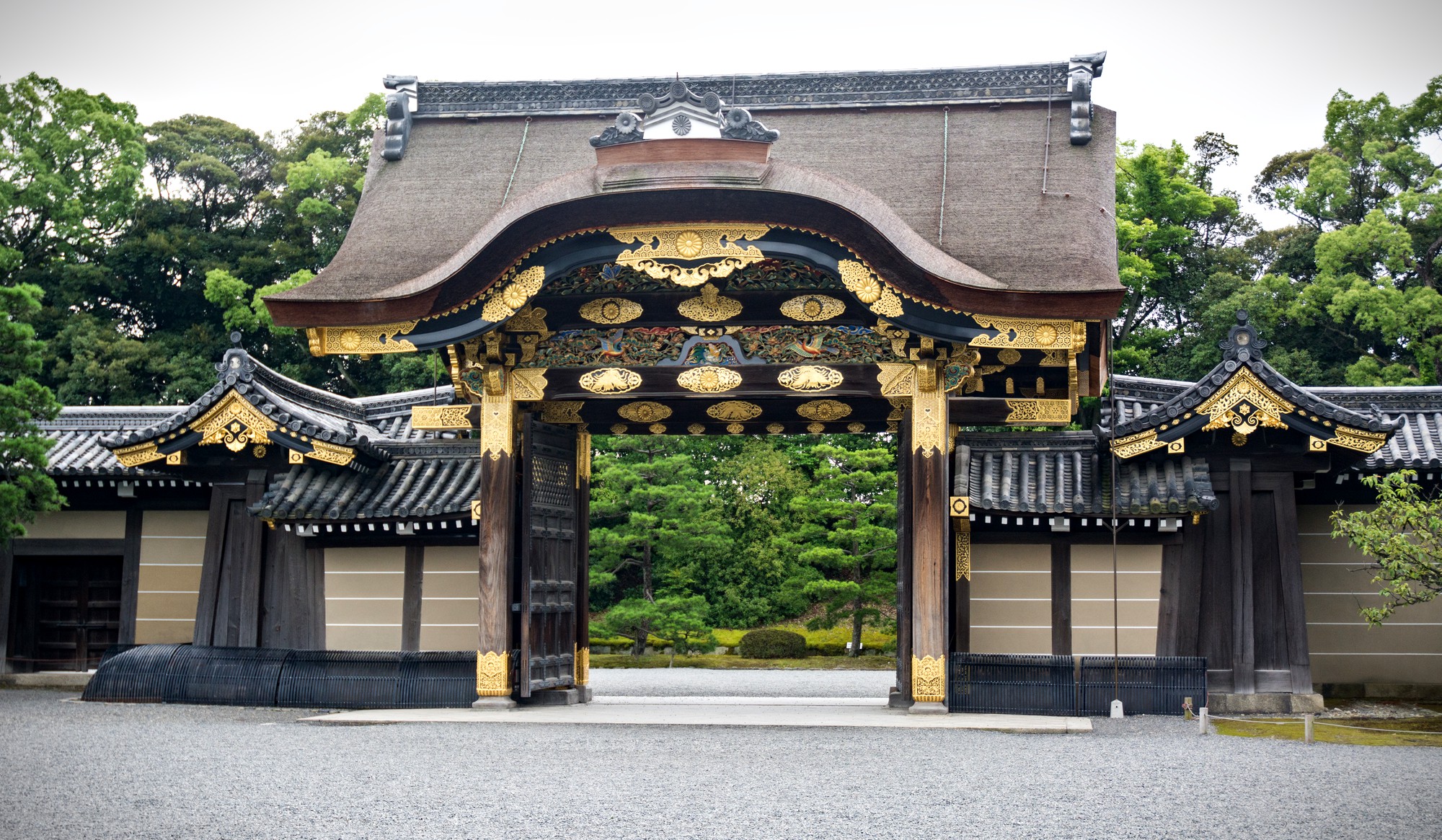
Credit: LizardJedi. Licensed under CC. Original modified.
Tour of Nijo Castle
A guided tour of Nijo castle is a great way to ensure that you get all the important historical details and anecdotes. You can either rent an audio guide at the entrance for about ¥500, or you can book a tour with a real guide. The link below refers to a recommended (reasonably priced) tour, which includes access to a part of the palace which isn’t normally open to visitors.
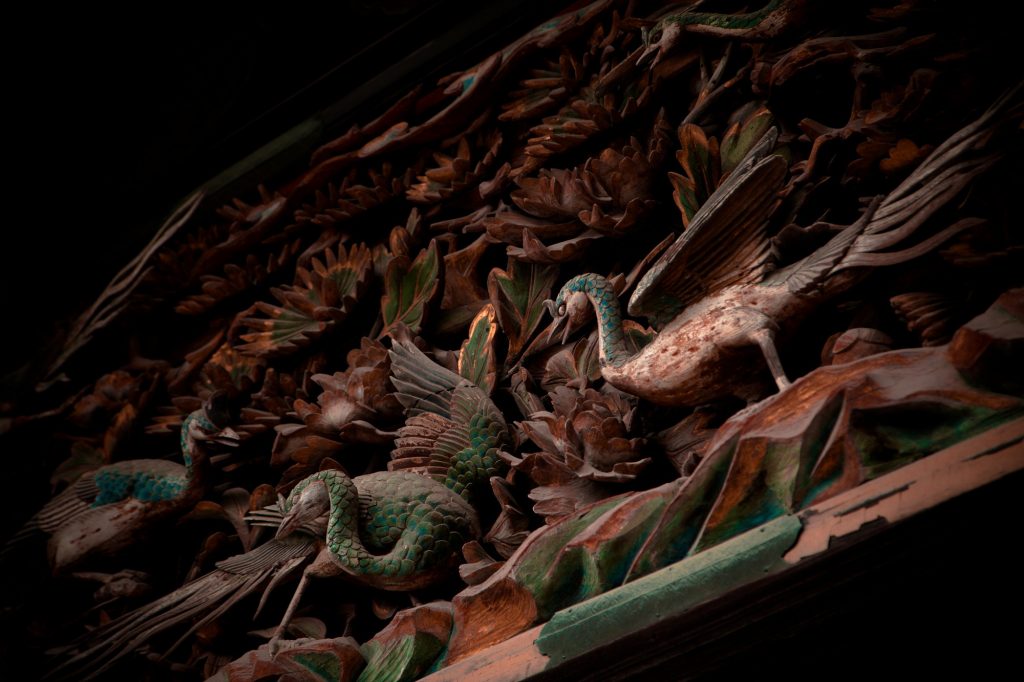
History of Nijo Castle
Construction of Nijo castle began in 1601, shortly after Tokugawa Ieyasu had seized power of the country. A few years later, in 1603, he established the Tokugawa Shogunate with himself as the shogun. Ieyasu didn’t live to see the finished castle complex which was completed in 1626 by his grand son, Tokugawa Iemitsu. The castles main tower (today only the foundation is left) and the Karamon main gate were moved from nearby Fushimi Castle to Nijo-jo just before the complex opened in 1626.
Parts of the castle buildings burned down over the years, most tragically in 1788 when a large city fire burned down the entire main circle. It wasn’t until 1893, after the Meiji restoration, that the area behind the second moat was put to proper use again. At this time, a part of the imperial palace was moved here following the imperial courts move from Kyoto to Tokyo. These are the Honmaru palace buildings seen today.
The Ninomaru Palace played a central role in the termination of the Tokugawa Shogunate and the beginning of the Meiji era. It was here that the last Tokugawa ruler, Yoshinobu, officially returned the authority to the imperial court. When looking closely at the structures one can observe that they are marked with the imperial chrysanthemum-shaped crest despite being old Tokugawa clan buildings. This is a result of the fall of the Tokugawa shogunate, and the imperial court reclaiming the power (and taking over the properties).
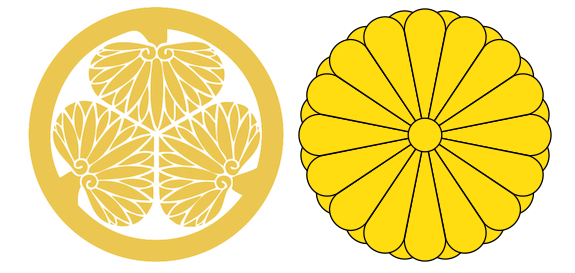
Derived from Public Domain works.
Getting there
By subway: Nijojo-Mae Station is located right next to Nijo Castle. The Tozai Line stops here.
From Kyoto Station: Take the Karasuma Line north to Karasuma Oike Station. Transfer to the Tozai line and take it one stop west-bound to Nijojo-Mae Station. Alternatively you can walk from Karasuma Oike Station in 10 minutes.
Cover photo credit: bethom33. Licensed under CC. Original modified.

